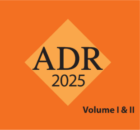
If you only have time to read one blog about the Dangerous Goods supply chain, we’re glad you make it ours. And if you don’t even get the time to read our blog every week, here are our top 12 posts from the last year, in chronological order:
- Hazmat hopes: A 2018 wish list from top Dangerous Goods professionals. If you could have one wish for the entire Dangerous Goods galaxy, what would it be? We asked hazmat pros that exact question, and they came back with our first annual Dangerous Goods Wish List—ranging from highly specific technologies and regulatory improvements to sweeping, industry-wide transformations. Look for the 2019 Dangerous Goods Wish List early next year!
- Confessions of a 3PL hazmat manager: “Lithium batteries are my life.”Cody DeGrush, Hazardous Materials Manager at GEODIS, described the “due diligence, shipper education and regulatory problem-solving” he applied to keep his clients’ lithium battery shipments compliant. As he said, “Customers don’t know what they don’t know.”
- 10 things your C-suite might not know about Dangerous Goods. More than one out of three DG pros who responded to our 2017 Global Dangerous Goods Confidence survey agreed their supervisors were unaware of exactly what they did. We hope they all sent this post to their bosses.
- CHEMTREC and Labelmaster team up for one reason: safety. In March, Labelmaster and CHEMTREC announced a new partnership that made Labelmaster the exclusive label manufacturer and distributor for CHEMTREC. Helping shippers get more reliable information to first responders gives everyone in the DG supply chain sleep-at-night peace of mind.
- DG Digest: PHMSA aligns with ICAO and IMO on 2mm inner border issue for labels. Few regulations prompted as much head-scratching as the clause in 49 CFR 172.407(c)(3) specifying hazmat labels have an inner border exactly 2 mm thick. In May, PHMSA published a Letter of Interpretation rescinding the requirement. And there was much rejoicing.
- What device manufacturers can learn from the failure of Bluesmart. When “smart” luggage maker Bluesmart had to shut down due to airlines’ ban of luggage with non-removable batteries, it was a clear wake-up call to other manufacturers to make hazmat compliance part of their research and development process.
- How will blockchain impact hazmat? Transparency 18 offered exciting clues. Labelmaster’s Vice President of Marketing Robert Finn attended the Transparency 18 Summit in Atlanta to discover the latest advances in applying blockchain technology to the transport of hazardous materials. His findings? Blockchain will likely enhance transparency with regard to performance history, quality assurance, compliance, capacity monitoring and fraud detection.
- What are Materials of Trade, and why should you care? Once your hazmat item reaches its end user, we’re no longer talking about Dangerous Goods transport, right? Wrong! Materials such as paints, gasoline and pesticides still pose a safety risk whenever they’re transported—even just from one job site to another—so they are still subject to quantity limitations, packaging requirements, and marking and labeling requirements.
- DG Digest: Listing the significant changes to the 60th Edition of the IATA DGR. Labelmaster regulatory specialist Nikki Burgess, CDGP, DGSA, gave us the first preview of the manual that “forms the practical basis for the regulated transport of Dangerous Goods by air throughout much of the world.” The book itself is now available and in effect.
- Five biggest surprises in the 2018 Dangerous Goods Confidence Outlook. With responses from 500 hazmat professionals on five continents, the DG Confidence Outlook has become the definitive snapshot of our industry. You’ll find data to take to your superiors—and your company’s C-suite—to convince them they need to make Dangerous Goods compliance a greater priority.
- Getting you ready — new lithium battery marks and labels are mandatory on January 1. For almost two years, shippers of small (excepted) batteries and battery-powered devices had the option to use either the old “Caution” label or the new lithium battery mark. On January 1, the lithium battery mark became mandatory and the handling label became obsolete. If you’re still unclear on the new requirements, this post is a handy guide.
- Why “total value of compliance” is a new paradigm for hazmat shippers. More and more DG pros say they’d like to make compliance a competitive advantage, but they don’t know how to make the case with their companies’ management. That’s why we developed a new idea for the modern supply chain: total value of compliance. You’ll be hearing a lot more about it in 2019.
Miss these posts the first time around? Subscribe to the Labelmaster blog, where DG pros find the information and the insight they need to stay safe, compliant and sane.


